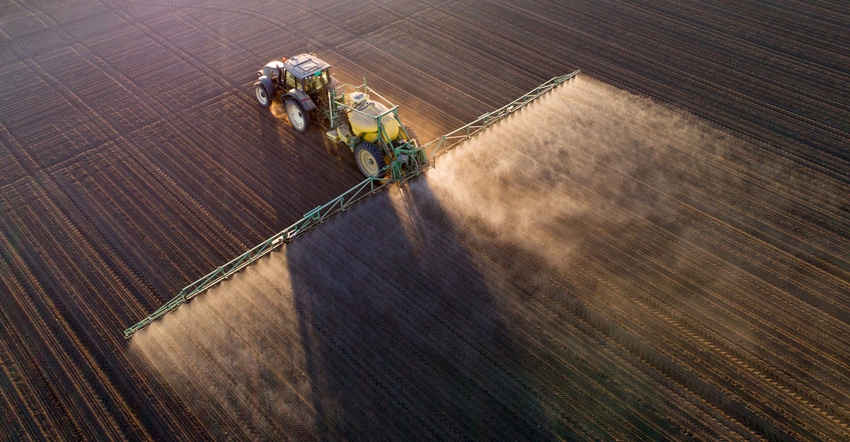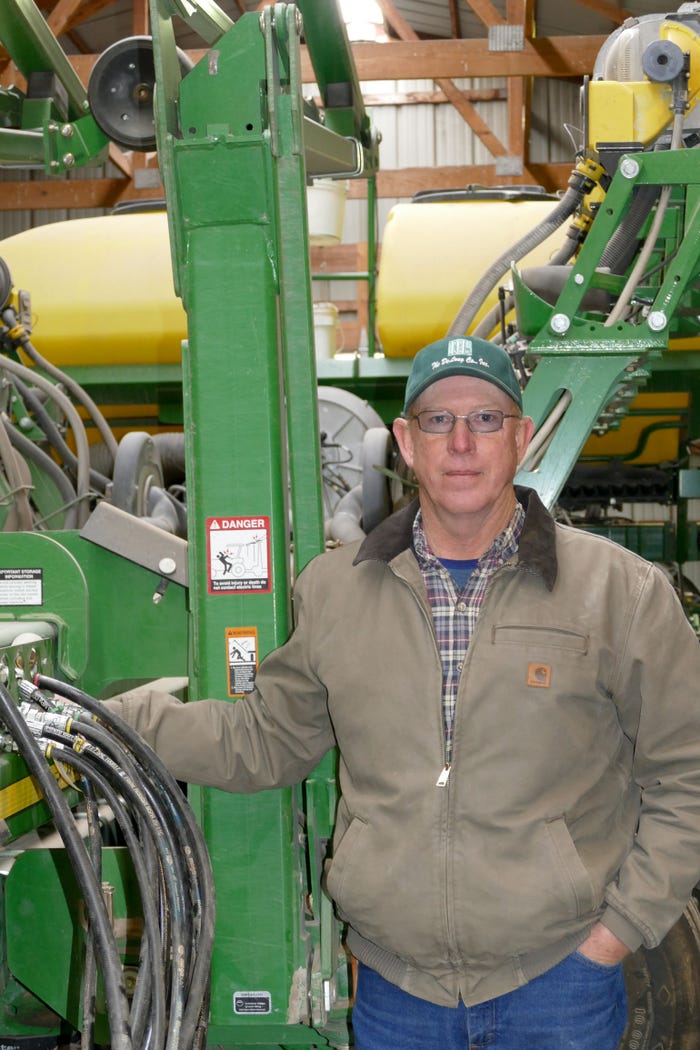
Most businesses have layers of management to keep the operation going. A large farm with thousands of acres and millions in revenue typically does not. The farmer-owner serves as chairman of the board, CEO, production foreman, operations manager, chief finance officer, tech guru and more.
As a result, the operator decides what work is done in house with owned equipment, and what is contracted out. As farms grow, those decisions change often because timeliness becomes a bigger challenge.
“That is one of the advantages of owning — you have a lot more control of when you can get a machine in the field,” says Gregg Ibendahl, Kansas State University ag economist.
In eastern Kansas, John McFarland has made those decisions as he has added acres since taking over from his father about 30 years ago and later converting entirely to no-till. While McFarland says he can farm more acres with fewer people, no-till requires more intense weed control and increases wear and tear on equipment.
Most of McFarland’s work is done in house with his own equipment and hired help, but he will hire custom crews during busy times when extra labor and equipment are needed.
Timing important
Spraying weeds is critical in no-till operations, which is why McFarland now owns two sprayers. And during the harvest rush when a fall application is needed, he will even hire a third one.
When they went to no-till, they needed more sprayer applications, he says. “It boils down to timeliness. Some of these weeds, if you don’t kill them when they are 2 inches tall, you don’t kill them.”
McFarland added his second sprayer in 2013, a decision based on need and cost. Custom sprayers are not always available when needed, plus there is cost savings in doing it yourself.
“You can get multiple applications on a crop,” he says. “The local applicator will charge you each time they go over a field. It is not hard to get $20 to $25 an acre tied up in application charges.”
In addition, McFarland saves on chemical costs. He buys chemicals online at about 35% less than if he hired a commercial sprayer.
“When they come out and apply, you are buying the chemicals through them too.”
Location, Location, Location
Unlike long, wide fields in Iowa and central Illinois, fields in eastern Kansas can be small with some about 40 acres; that requires frequent equipment movement from one location to another. That is a challenge for McFarland, particularly during the corn and soybean harvests when timeliness is critical.
Last year he solved some of that location issue by hiring a custom harvester when there was a rush to get soybeans out. The custom harvester had four combines and brought one over to join McFarland’s harvest.
“Because of our field size and the inefficiencies, you have to figure out whether to get a second combine or get somebody to help me cut,” McFarland says. “At this point, I decided it is more efficient for me to hire a guy with a combine. Because if I buy a second combine, I will have to hire somebody to run it.”
Other benefits to hiring a custom harvester versus owning a second combine include avoiding depreciation, interest expenses and repair costs, Ibendahl says. “That is an important consideration during times of tight margins.”
In southern Illinois, where Ibendahl grew up, farmers often hire additional combines to harvest winter wheat, so they can quickly plant soybeans in those fields.

“We look at what we are spending our money on and is there a way to do it cheaper,” says Kansas farmer John McFarland.
Mechanic on Duty
All farms of a certain size have a repair shop and that includes McFarland’s operation. Parts on the planters, combine, tractors and other equipment are replaced “in house” when worn out.
Do-it-yourself repairs helped alert him to a problem during no-till planting. The added pressure that is needed to put seed in the soil quickly wore out the rubber tires on the gauge applicators. He researched options and found a longer-lasting neoprene tire.
“We were replacing 125 tires on two pieces of planting equipment every year at $35 apiece,” he says. “We have replaced those with the neoprene, and it has made a big difference.”
However, new technology has raised legal concerns for do-it-yourself repairs. Farmers have allegedly been warned of legal issues, as repairs on this technology could violate copyrights or warranties.
“Deere has made the case that the software that controls their equipment is proprietary, and farms may not legally be able to work on it,” Ibendahl says.
If such farm technology continues to evolve, this could be a problem for farmers, who throughout history have repaired their own equipment.
“I think going forward that may not be an option,” the economist said of in-house repairs.
Hire Good help
One area not to be overlooked is labor. Hiring experienced help and paying them a decent wage pays off.
“Do you really want to hire the cheapest labor to drive that expensive piece of equipment?” Ibendahl asks. “In the whole scheme of things, labor is not a place where you want to scrimp. You want quality employees. Labor, compared with total operating costs, is a relatively low percent anyway.”
McFarland has one full-time employee who has been with him 12 years. He gets additional help from his stepson and his brother, who both work part time. Because of no-till, that is enough help to handle most production tasks.
Help available
A host of cloud-based commercial programs can help farmers with many of the what-if decisions related to equipment and labor management. Less-expensive university-based programs can also help.
McFarland, who spends his morning hours on finances, relies on a farm management service offered by Kansas State University’s Extension unit for much of his budgeting, taxes and other financial matters.
For help with production decisions, such as hiring custom work, machinery use and other tasks, Ibendahl says Iowa State University’s AgDecision Maker service is useful. For taxes, crop insurance, financial management and government programs, Kansas State University has its site, agmanager.info. Both services provide guidance and tables that farmers can use to calculate costs.
Also, the website farmdoc.illinois.edu from the University of Illinois has many tables to help guide decisions, such as budgeting, taxes, crop insurance, government programs, equipment use, cash rent analysis and more.
Burgdorfer, a former senior editor with Farm Futures, writes from Lenexa, Kan.
About the Author(s)
You May Also Like




